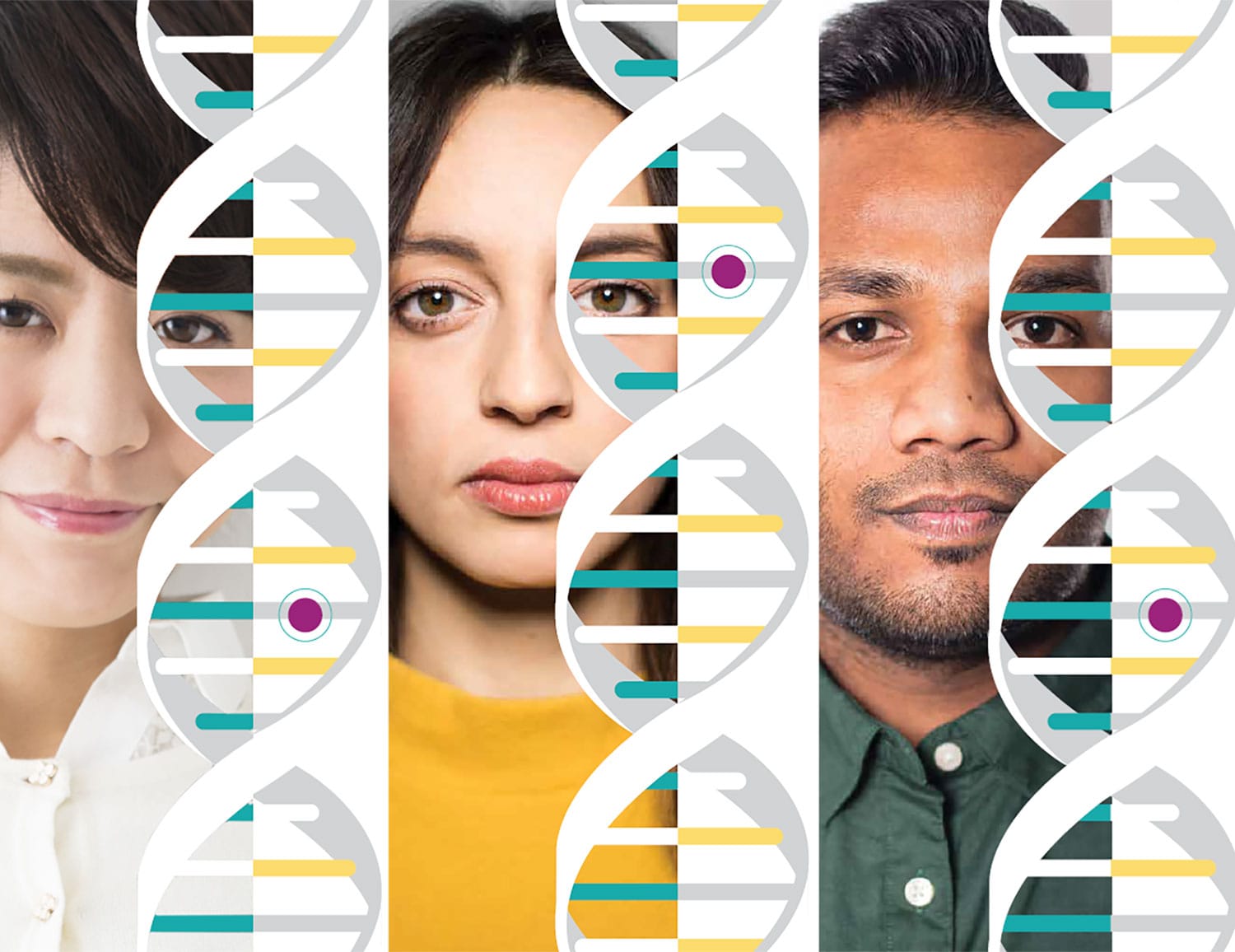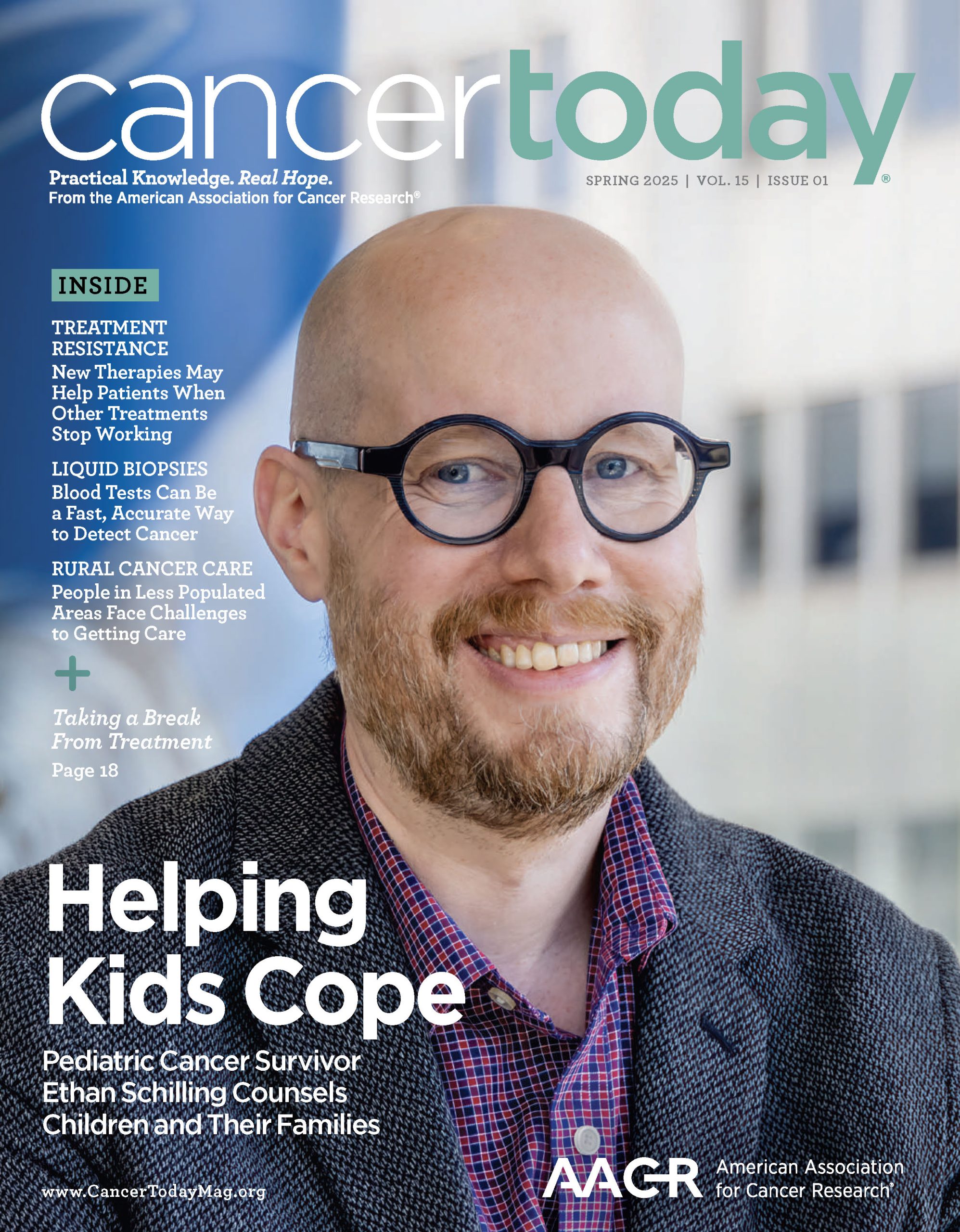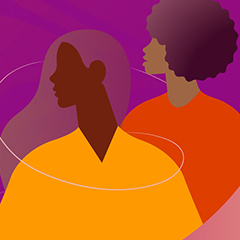MARISOL ROSAS was 8 years old when her mother, Celia Bazua de Rosas, died from ovarian cancer in 1981. It was her mother’s second cancer diagnosis. She had been diagnosed with breast cancer at age 42, shortly after Rosas, her sixth and last child, was born. For Rosas and her brothers and sisters, who were all raised in Baja California, Mexico, “there was always a concern,” she says, “that this could happen to any of us.”
As the siblings got older, their worries grew as three cousins on their mother’s side of the family were diagnosed with cancer. “One had breast cancer that spread to her brain,” says Rosas. “Another had breast cancer and then had a recurrence. Another had breast and ovarian cancer and then died of pancreatic cancer. I knew there was something going on, but I didn’t know what to do about it.”
Then, in 1998, Rosas got a call from a cousin who had moved from Mexico to California. Her cousin explained that her doctor had told her about a new blood test that could look for signs of an increased risk for breast or ovarian cancer. Her test had come back positive. She was calling to tell Rosas that she and her siblings should get tested, too.
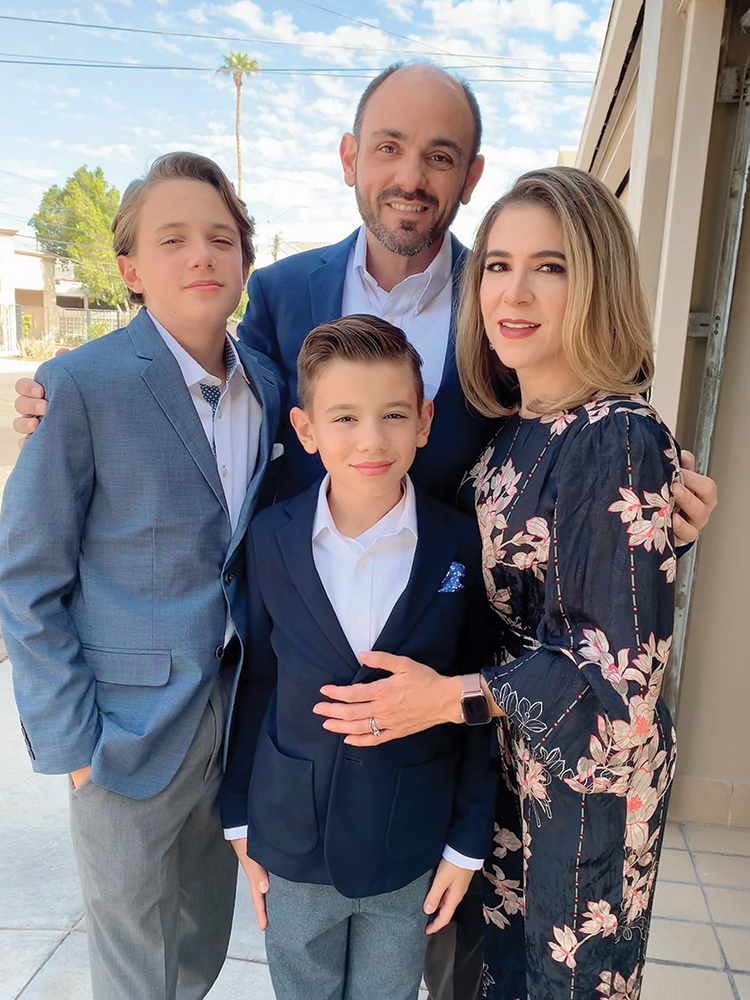
Marisol Rosas stands with her husband, Luis, and sons Santiago, left, and Nicolas. Photo by Rebeca Rosas
Rosas’s cousin was among the first wave of women to be tested for harmful mutations, or pathogenic variants, in the BRCA1 and BRCA2 genes (BReast CAncer genes 1 and 2). Everyone has BRCA genes. But some people are born with BRCA genes that have certain mutations they inherited from their mother or father that increase cancer risk. One study estimates about 72% of women with an inherited BRCA1 mutation and about 69% of women with an inherited BRCA2 mutation will develop breast cancer by the age of 80.
About 5% to 10% of all breast cancer diagnoses are thought to be hereditary, with BRCA1 and BRCA2 mutations being the most common culprits. Although the genes were named for their link to breast cancer, mutations in these genes also substantially increase ovarian cancer risk, with about 44% of women with a BRCA1 mutation and about 17% of women with a BRCA2 mutation expected to develop ovarian cancer by age 80. Women with these mutations account for about 15% of people diagnosed with ovarian cancer. A test for the BRCA mutations, which became commercially available in 1996, provided an opportunity for surgical interventions—removal of the breasts and ovaries—in high-risk women to greatly reduce their chance of getting these cancers. A positive BRCA test in a woman who had been diagnosed with breast or ovarian cancer could also inform treatment decisions.
But BRCA mutations do not only increase risk for breast and ovarian cancer, and they are not just found in women. Studies have shown that mutations in these genes can increase risk for melanoma and pancreatic and prostate cancer. These discoveries, along with a dramatic drop in price for genetic testing, have led to calls for broadening BRCA testing.
Testing for Risk Reduction
As soon as a test for BRCA mutations became available, questions were raised about who should be tested. In 2005, the U.S. Preventive Services Task Force (USPSTF) issued its first guidelines for BRCA genetic counseling and testing. It determined that testing should be limited to women with a family history of breast or ovarian cancer. Since then, the USPSTF has broadened its recommendations for testing. In its most recent guidelines, published in August 2019, the group recommends that genetic counseling and, when appropriate, testing be offered to women who have previously been treated for breast or ovarian cancer to reduce their risk for a second cancer, and to all women of Ashkenazi Jewish ancestry because they are at high risk for these mutations.
Heidi Nelson, an epidemiologist at Oregon Health & Science University in Portland who led the evidence review for the 2019 guidelines, says “there has not been a lot of new information [for the Task Force to consider since the last update in 2013] that applies directly to the question of which women who do not have cancer are good candidates for testing.”
Other experts argue that broadening the criteria even further would benefit more women. This group includes Mary-Claire King, who discovered the BRCA1 mutation that increases cancer risk in 1994. She published an editorial in JAMA in 2014 arguing that all women should be tested for BRCA mutations. “To identify a woman as a carrier only after she develops cancer is a failure of cancer prevention,” she wrote. Making BRCA testing routine could also have a direct impact on black women and Latinas, who studies show are less likely than whites to be offered genetic testing.
Bringing Men Into the Picture
The USPSTF was charged specifically with developing guidelines on BRCA testing for women. Their recommendations are reflected in the preventive care coverage for women in the Affordable Care Act, which requires insurers to pay for genetic counseling and testing in high-risk women. This focus could easily lead someone to assume that testing for inherited risk is only for women, or that the genetic mutations that increase risk are only passed down from women to their daughters. But that’s not the case. BRCA mutations are found in men and can be passed on by them, too. Their breast cancer risk is not nearly as high: A 2007 study found that roughly 1% of men with a BRCA1 mutation and nearly 7% of men with a BRCA2 mutation developed breast cancer by age 70. Men with the BRCA2 mutation are seven times more likely to develop prostate cancer than men who do not have the mutation.
“Men tend to be forgotten by a lot of physicians, who think BRCA mutations are unique to and only relevant to women,” says Dana Zakalik, a breast oncologist and cancer geneticist at Beaumont Health in Royal Oak, Michigan, who published a study in BMC Cancer in 2018 that found high rates of multiple cancers in men with BRCA mutations. “We still have doctors who think it can only be transmitted through the mother and not by the father and only look at the mom’s cancer history. But a man can transmit it just as much as a woman can.”
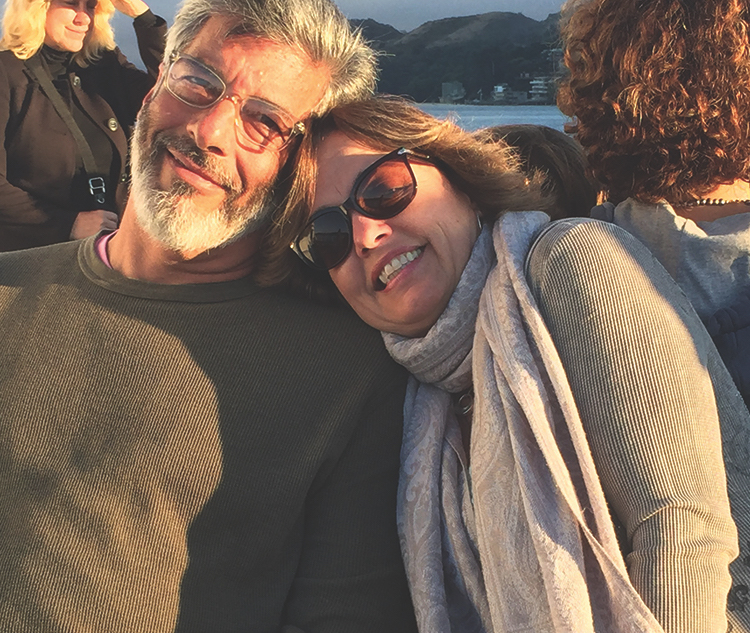
Prostate cancer survivor Michael Sudman poses with his wife, Sheryl. Photo by Marian Everest
This knowledge can help men like Michael Sudman, a 55-year-old attorney in Ventura, California, who from a young age saw cancer affect the women in his family. First, his aunt died from breast cancer. Then, his cousin, his aunt’s daughter, died from ovarian cancer. In 2000, his sister Laura was diagnosed with breast cancer at age 40. She died in 2008. Laura had genetic testing a few years after she received her diagnosis. That’s when she learned she had a BRCA1 mutation, says Sudman, who immediately thought of his other two sisters and their need to get tested. The idea that he might also have the mutation didn’t cross his mind, he says. Eventually, Sudman’s nurse practitioner suggested he get tested; the results showed he had the same mutation as Laura. Their other two sisters had negative results. Sudman believes he and Laura inherited the mutation from his father, who had prostate cancer but never had genetic testing.
Sudman’s BRCA test result and nurse practitioner’s heightened awareness of his cancer risk led to his diagnosis with early-stage prostate cancer in 2015, he says. Today, he works with the Norris Comprehensive Cancer Center at the University of Southern California in Los Angeles and with the patient advocacy group Zero – The End of Prostate Cancer to increase awareness about prostate cancer and hereditary cancer testing for men. “It’s hard to find a reference to male BRCA anywhere,” says Sudman.
Testing After Cancer
The National Comprehensive Cancer Network (NCCN), which develops evidence-based clinical treatment guidelines for health care professionals, has expanded its recommendations to include testing of men for what it terms BRCA-Related Breast and/or Ovarian Cancer Syndrome. The most recent NCCN guidelines, published in January 2019, call for genetic testing for all women diagnosed with ovarian cancer, all men diagnosed with breast cancer, and all women and men diagnosed with pancreatic cancer. But the organization stops short of recommending that all women with breast cancer be tested, focusing instead on criteria based on family history, age at diagnosis and type of breast cancer. In contrast, the American Society of Breast Surgeons’ guidelines, released in July 2019, call for testing of all breast cancer patients.
BRCA is by far the most common inherited mutation linked to breast cancer, accounting for about 20% to 25% of all hereditary breast cancer. But with the identification of new mutations and the introduction of low-cost multigene panel tests, most breast cancer patients are now tested for more than BRCA. The Society of Breast Surgeons’ guidelines, for example, call for testing patients for, at minimum, mutations in BRCA1, BRCA2 and PALB2. (The PALB2 genes help the BRCA genes fix DNA; mutations in this gene also increase cancer risk.) But which genes should be included in a multigene panel test remains an open question. There are 80-gene panels available, says Zakalik, but just because you can test this many genes doesn’t mean you should, especially since there may be no research on how to manage patients who have a rare mutation.
Information on BRCA testing is available.
Testing Those Who Need It Most
Broadening BRCA screening criteria and testing more genes could identify more people at risk for hereditary cancer. But some question the value of bringing in people for testing who are less likely to have a mutation when more than 1.2 million women with a history of breast or ovarian cancer who already meet the criteria haven’t been tested. “While we are having this debate about what the threshold for testing should be,” says Susan Domchek, a breast cancer geneticist at the University of Pennsylvania Perelman School of Medicine in Philadelphia, “it’s also important to remember that there are a lot of people right now who are at the highest risk for having these mutations who are not getting access to testing … and this is often minorities. So, we need to address this disparity.”
Allison Kurian, a cancer geneticist and medical oncologist who directs the Stanford University Women’s Clinical Cancer Genetics Program in Palo Alto, California, published a study in the May 20, 2019, Journal of Clinical Oncology that looked at hereditary cancer testing rates in 77,085 breast cancer patients and 6,001 ovarian cancer patients in Georgia and California from 2013 to 2014. For more than 10 years, guidelines have called for hereditary genetic testing for all women diagnosed with ovarian cancer. But the study found only one-third of the ovarian cancer patients had been tested, a result Kurian calls both “remarkable and alarming.” Kurian’s next study will try to decipher why these women aren’t getting guideline-recommended testing. “We know insurance will pay for it,” she says, so there must be other factors at play.
Undertesting in potential BRCA carriers is what drove Karen Lu, a gynecologic oncologist at the University of Texas MD Anderson Cancer Center in Houston, to launch the Making Genetic Testing Accessible (MAGENTA) Study, which is enrolling 4,000 women who meet the criteria for genetic counseling and testing. The women will be given a saliva test kit and be randomly assigned to receive alternate approaches to in-person genetic counseling, such as online video education and pre- and post-counseling by phone. “We’ve been very cautious about how we offer testing, but the reality is there are not enough genetic counselors who are trained to provide services to all these people who need it,” says Lu.
Letting children know they might have a mutation that increases their risk for cancer can be a challenge. In this story, experts share tips on talking about inherited mutations.
It wasn’t until 2009, when Rosas, who was then married with two sons and living in St. Louis, had a doctor recommend that she have the genetic testing her cousin had first told her about in 1998. When she learned she tested positive, Rosas says, “I felt like a ticking time bomb.” She had a double mastectomy and had her ovaries removed. She also convinced her sisters and brothers to drive up from Mexico to San Diego for genetic counseling and testing. “It turned out I was the only one that won that raffle out of six kids,” Rosas says of her positive test result.
Looking for support, Rosas turned to FORCE (Facing Our Risk of Cancer Empowered), an organization that provides information and support for individuals with a hereditary cancer risk. “It was wonderful to find this community where women were really open about what they were going through,” she says. Soon, she was volunteering to help others. Now living in Irvine, California, Rosas oversees the organization’s national helpline and peer navigation program, which connects volunteers nationwide to individuals who have recently learned they have a hereditary mutation. She also spends time getting the word out about genetic counseling and testing to the Latino community. “So many people have reached out to me after they learned they had cancer or their mom did asking if they should be tested and if insurance will pay for it,” she says. She’s happy to be able to help. “It’s a pay-it-forward kind of thing.”
Cancer Today magazine is free to cancer patients, survivors and caregivers who live in the U.S. Subscribe here to receive four issues per year.

